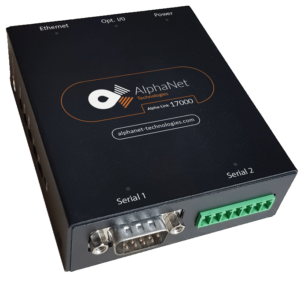Wiring a Modbus Gateway
What is a Modbus Gateway?
So, what exactly is a Modbus Gateway? It’s a device that functions as a translator between two devices that speak different languages. In the realm of industrial communication systems, this means acting as a bridge between different protocols, such as Modbus RTU and Modbus TCP/IP.
Why use a Modbus Gateway?
Let’s take a moment to ponder this, why should we consider using a Modbus Gateway? Well, with the evolution of the Industrial Internet of Things (IIoT), the requirement for devices speaking different communication protocols to communicate effectively has become essential. And this is exactly where a Modbus Gateway steps in, offering a seamless communication bridge.
Understanding Modbus Protocols
Modbus RTU
This takes us to the world of Modbus protocols, starting with Modbus RTU. A serial communication protocol, Modbus RTU is used for data transmission via serial lines between electronic devices.
Key Features of Modbus RTU
To help you better understand, let’s break down the key features of Modbus RTU. It’s renowned for its simplicity, ease of deployment, and ability to send data over long distances. However, it’s often confined to simpler applications due to its limited data size.
Modbus TCP/IP
Next up, we have Modbus TCP/IP. This is an adaptation of the Modbus RTU protocol, designed to allow Modbus communication via modern networks using TCP/IP protocol stacks.
Key Features of Modbus TCP/IP
And what makes Modbus TCP/IP special? Well, apart from benefiting from the robustness and speed of Ethernet networks, it is compatible with a wide range of industrial devices and can transport larger data sizes, making it a versatile choice for complex applications.
Step-by-step Guide to Wiring a Modbus Gateway
Essential Equipment
Let’s now jump right into the wiring process. First off, ensure you have the necessary equipment – a Modbus Gateway, wires, a wire stripper, and the devices you plan to connect.
Wiring Process
Step 1: Start by connecting one end of your wire to the Modbus RTU device and the other to the Modbus Gateway’s RTU port.
Step 2: Repeat this process with your Ethernet cable, connecting the Gateway’s Ethernet port to your Modbus TCP/IP device.
Step 3: After double-checking all your connections, power on your devices and start the Gateway’s configuration software.
Common Mistakes & Solutions in Wiring Modbus Gateway
Even experts make mistakes, right? Some common ones include incorrectly connected wires and mismatched communication settings. But worry not, as troubleshooting is typically as simple as rechecking your connections and settings.
Maintenance & Troubleshooting of Modbus Gateway
Just like your car needs regular service, Modbus Gateways also require routine maintenance. This includes cleaning, checking connections, and updating software regularly. And remember, if you ever run into any issues, refer to your user manual or contact the manufacturer.
The Future of Modbus Gateway
Now, let’s gaze into the future. The Modbus Gateway is all set to be a key player in the IIoT field, with advancements targeting improved speed, security, and ease of use. Stay tuned to ensure you don’t miss out!
Conclusion
And there you have it, your complete guide to wiring a Modbus Gateway. It’s essential to remember that while the process might seem complex at first, with the right tools and a bit of patience, you can certainly master it!
FAQs
- What is the main purpose of a Modbus Gateway?
A Modbus Gateway is primarily used to bridge communication between devices that use different protocols.
- What is the difference between Modbus RTU and Modbus TCP/IP?
While Modbus RTU is a serial communication protocol, Modbus TCP/IP is an adaptation that allows communication over modern TCP/IP networks.
- What equipment is needed to wire a Modbus Gateway?
You will need a Modbus Gateway, wires, a wire stripper, and the devices you plan to connect.
- What are some common mistakes made while wiring a Modbus Gateway?
Common mistakes include incorrect wire connections and mismatched communication settings.
- How can I maintain my Modbus Gateway?
Regular cleaning, checking connections, and updating software will help maintain your Modbus Gateway.


